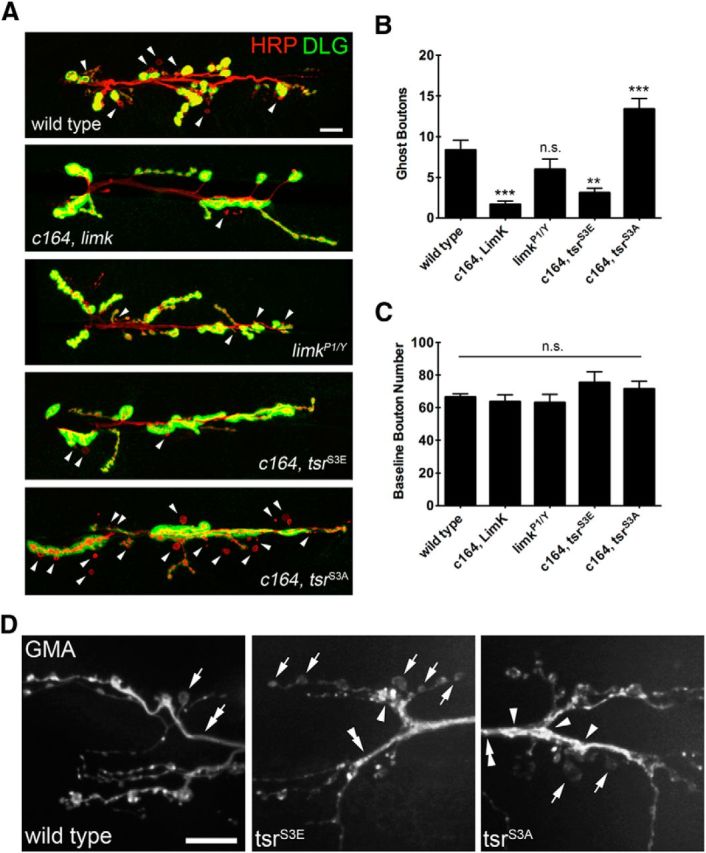Figure 5.

Ghost bouton budding is regulated by Limk and Cofilin activity. A, Presynaptic overexpression of limk strongly reduces activity-dependent bouton budding. Presynaptic overexpression of constitutively inactive tsrS3E reduces ghost bouton budding, while presynaptic overexpression of constitutively active tsrS3A increases ghost bouton budding above wild-type levels. Scale bar, 12 μm. Arrowheads indicate ghost boutons. B, Quantification of ghost bouton budding frequency in the indicated genetic background. N (NMJs, animals): wild-type = 57, 11; c164, limk = 40, 5; limkP1/Y = 36, 5; c164, tsrS3E = 28, 4; c164, tsrS3A = 36, 6. C, Quantification of baseline bouton number in the indicated genetic background. D, Live confocal imaging of GMA-GFP at NMJs driven by c164-Gal4. F-actin labeled by GMA appears as dynamic puncta with relatively even size and spacing in wild-type animals. GMA labeling in axons and extended interbouton regions is stable and uniform at wild-type NMJs (double arrow), but is interrupted by puncta and appears less uniform in tsrS3E and tsrS3E NMJs (double arrowheads). Boutons lacking discernable F-actin puncta occurred rarely at wild-type NMJs and more frequently at tsrS3E NMJs (arrows). Large and bright GMA labeling was observed in some boutons in tsrS3E and tsrS3A NMJs that was not observed in wild-type (arrowheads). Scale bar, 12 μm. *p < 0.05; **p < 0.01; ***p < 0.001; ANOVA. Error bars indicate SEM.
